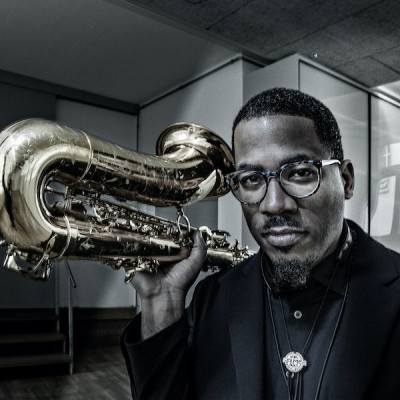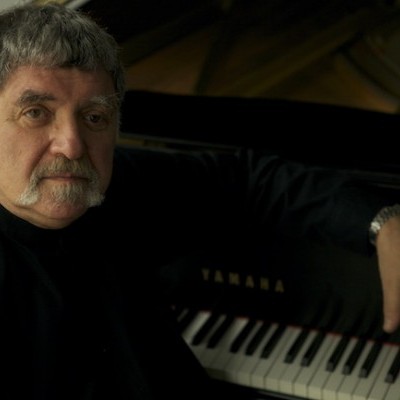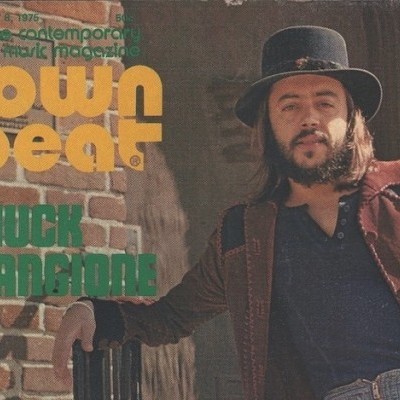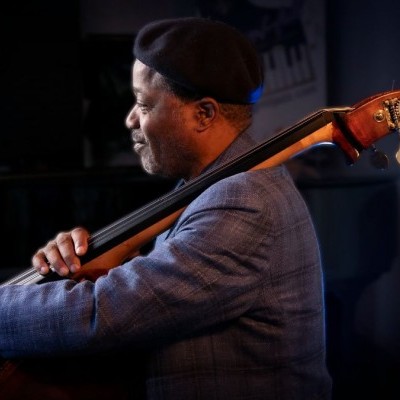Jul 17, 2025 12:44 PM
DownBeat’s 73rd Annual Critics Poll: One for the Record Books
You see before you what we believe is the largest and most comprehensive Critics Poll in the history of jazz. DownBeat…

Robert Cray recorded his latest album, That’s What I Heard, at the Capitol Records building in Hollywood.
(Photo: Mark Sheldon)When it comes to the long, storied career of Robert Cray, time and musical fashion have been slippery slopes of the saga.
The singer-guitarist burst onto the scene in the early ’80s, proudly and organically “retro,” and pledging a natural allegiance to authentic blues and classic r&b. As a 20-something “old soul” artist, Cray lit up the blues world as a fiery and tasteful young-blood guitarist.
He struck global gold when “Smoking Gun,” a track from his 1986 album Strong Persuader, roared up to No. 22 on the Billboard pop singles chart. MTV put a music video for the song in heavy rotation, and nowadays, the track still gets played on classic rock radio stations. That level of pop stardom naturally faded, but Cray has continued to steadily tour the globe for decades.
Cray, now 66, isn’t one of those artists who cranks out a new release every 12 months. He tends to favor quality over quantity, and the five Grammy awards in his trophy case support that notion. He explored renewably relevant ’60s soul turf on 2017’s Robert Cray & Hi Rhythm (Jay-Vee), collaborating with musicians from the legendary Memphis-based Hi Records. His new album, That’s What I Heard (Nozzle/Thirty Tigers), sports a menu of vintage covers, rarities from the r&b and gospel archives, and old-school-style originals that fit snugly into the program.
“Some of the [older] songs on the record sound like brand-new stuff,” Cray said. “I think the music is timeless.”
Cray spoke with DownBeat on a recent morning at a coffee house in Santa Barbara, California, just over the hill from where he lives with his family in the Santa Ynez Valley. The release of That’s What I Heard was looming large on his calendar. Two days after the interview, he would head to Port Chester, New York, to be a logical puzzle piece in the “Thrill is Gone” tribute to the late blues master B.B. King, featuring such acclaimed guitarists as Buddy Guy, John Scofield, Jimmie Vaughan and Gary Clark Jr., with drummer Steve Jordan serving as music director.
Jordan has been Cray’s close ally for decades, going back to their meeting on the Chuck Berry tribute/documentary project Hail! Hail! Rock ’n’ Roll! in 1987. He has produced six of Cray’s albums, including Take Your Shoes Off and That’s What I Heard.
True to his deep blues roots, Cray boasts a sturdy link to King, an artist he opened for and shared stages with on many occasions—as has happened with a long list of now-bygone blues greats Cray had direct musical contact with.
“I was talking with [bassist and longtime friend] Richard [Cousins] about that,” Cray said, discussing his connection to the past. “A lot of the younger kids now who are doing the blues, they haven’t had the opportunity that we did, to play with a lot of the old people, who are gone now: Albert Collins, Albert King, John Lee Hooker, now B.B., and Muddy [Waters] and on and on.
“We talked about how different it was, and how we were able to stand shoulder-to-shoulder and pick up how to back up and just see it directly. It’s a different thing now.” By the logic of cultural and generational continuum, Cray’s own current status finds him as a veteran blues legend in his own right.
The title of That’s What I Heard serves as a testament to Cray’s own musical upbringing, after he and Jordan settled on the largely vintage material and vibe. Call it truth in advertising. “The title came after listening and after the selection of covers that we did, the whole overall view of the varieties of music,” he said. “All that is stuff that I listened to or was inspired by, coming up.”
But despite appearances, the new album wasn’t approached with the intent of venturing into a personal “roots discovery” mode. Jordan had thought of the 1965 Sam Cooke album Shake as a general template for the project, so he sent Cray a compilation of vintage soul tracks to peruse. Cray immediately latched onto Don Gardner’s snaky-funky number “My Baby Likes To Boogaloo,” as well as Billy Sha-Rae single, “Do It,” both of which became key tracks on the new album. Dipping further into the archival pool, Cray pays homage to his heroes Curtis Mayfield (“You’ll Want Me Back”) and Bobby “Blue” Bland (“You’re The One”).
History also sneaked into the logistics of the album’s progress when Jordan booked the band for a week of recording in the fabled Capitol Records building in Hollywood. These are the hallowed studios where Cooke, Nat “King” Cole, Frank Sinatra, The Beach Boys, Michael Jackson and Paul McCartney have recorded. Jordan recruited veteran studio engineer-producer Al Schmitt, who worked with Cooke, to help with the Cray sessions, alongside engineer Niko Bolas.
“This was the first time we’ve ever recorded at Capitol,” Cray said, “and it has such history, and there is the echo chamber that Les Paul built. You just turn the knob, and there it is. It’s under the parking lot at Capitol Studios,” he said with a chuckle. “They have all these old microphones, and Nat Cole’s piano is in the room that our keyboard player got to use. The history there, and the vibe, rubs off at least a little bit. At least you think it does.”
The new album also marks the first time Cray has cut a bona fide gospel tune, the Sensational Nightingales’ 1956 “Burying Ground.” Cray’s testimonial fervor in gospel-singer mode seemingly comes naturally, a byproduct of his deep ties to r&b, although his background didn’t come out of the church, a common lineage of such iconic soulsters as Cooke, Aretha Franklin and Al Green.
“I went to church for a little bit as a kid,” Cray recalled, “but I didn’t do it all the time. But my dad played gospel music on Sundays. Later on, after he got out of the military, he started a little quartet, which I never got to see, but they practiced a lot at the house. He liked a lot of that music. I listened to it as a kid, and when I got into the r&b and blues thing and started hanging out with my buddies, I got back into it again. It became something we did.

James Brandon Lewis earned honors for Artist of the Year and Tenor Saxophonist of the Year. Three of his recordings placed in the Albums of the Year category.
Jul 17, 2025 12:44 PM
You see before you what we believe is the largest and most comprehensive Critics Poll in the history of jazz. DownBeat…

Galper was often regarded as an underrated master of his craft.
Jul 22, 2025 10:58 AM
Hal Galper, a pianist, composer and arranger who enjoyed a substantial performing career but made perhaps a deeper…

Chuck Mangione on the cover of the May 8, 1975, edition of DownBeat.
Jul 29, 2025 1:00 PM
Chuck Mangione, one of the most popular trumpeters in jazz history, passed away on July 24 at home in Rochester, New…

“Hamiet was one of the most underrated musicians ever,” says Whitaker of baritone saxophonist Hamiet Bluiett.
Jul 8, 2025 7:30 AM
At 56, Rodney Whitaker, professor of jazz bass and director of jazz studies at Michigan State University, is equally…
Jul 17, 2025 11:35 AM
The DownBeat Critics Poll provides a wonderful snapshot of the jazz scene today, with much to explore and many great…